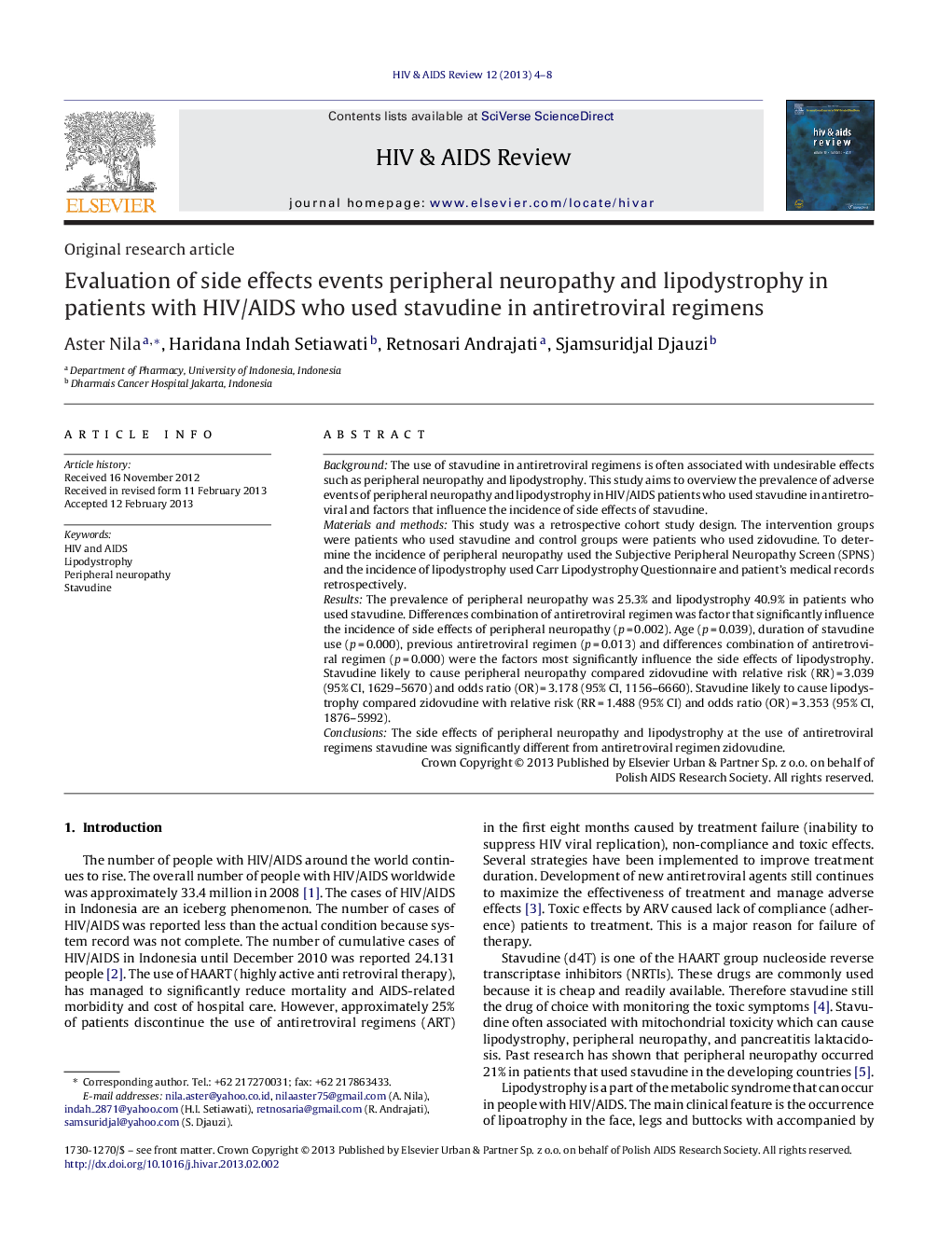| Article ID | Journal | Published Year | Pages | File Type |
|---|---|---|---|---|
| 3332349 | HIV & AIDS Review | 2013 | 5 Pages |
BackgroundThe use of stavudine in antiretroviral regimens is often associated with undesirable effects such as peripheral neuropathy and lipodystrophy. This study aims to overview the prevalence of adverse events of peripheral neuropathy and lipodystrophy in HIV/AIDS patients who used stavudine in antiretroviral and factors that influence the incidence of side effects of stavudine.Materials and methodsThis study was a retrospective cohort study design. The intervention groups were patients who used stavudine and control groups were patients who used zidovudine. To determine the incidence of peripheral neuropathy used the Subjective Peripheral Neuropathy Screen (SPNS) and the incidence of lipodystrophy used Carr Lipodystrophy Questionnaire and patient's medical records retrospectively.ResultsThe prevalence of peripheral neuropathy was 25.3% and lipodystrophy 40.9% in patients who used stavudine. Differences combination of antiretroviral regimen was factor that significantly influence the incidence of side effects of peripheral neuropathy (p = 0.002). Age (p = 0.039), duration of stavudine use (p = 0.000), previous antiretroviral regimen (p = 0.013) and differences combination of antiretroviral regimen (p = 0.000) were the factors most significantly influence the side effects of lipodystrophy. Stavudine likely to cause peripheral neuropathy compared zidovudine with relative risk (RR) = 3.039 (95% CI, 1629–5670) and odds ratio (OR) = 3.178 (95% CI, 1156–6660). Stavudine likely to cause lipodystrophy compared zidovudine with relative risk (RR = 1.488 (95% CI) and odds ratio (OR) = 3.353 (95% CI, 1876–5992).ConclusionsThe side effects of peripheral neuropathy and lipodystrophy at the use of antiretroviral regimens stavudine was significantly different from antiretroviral regimen zidovudine.
